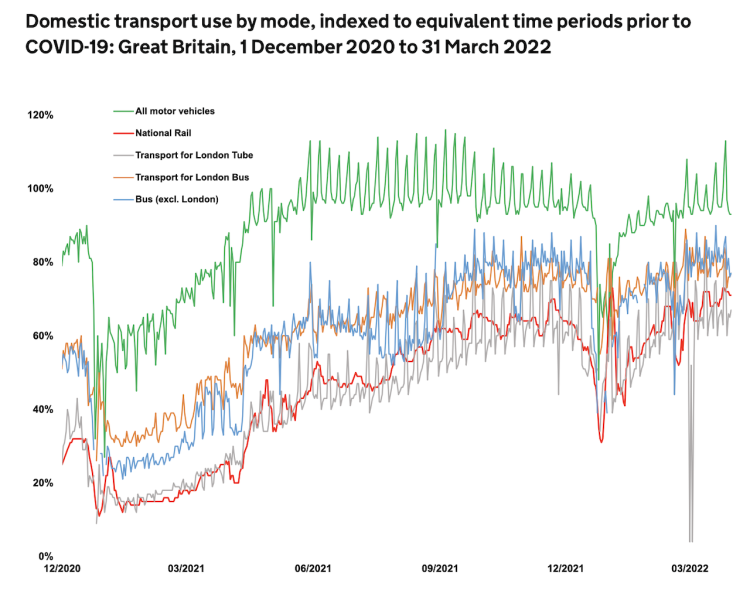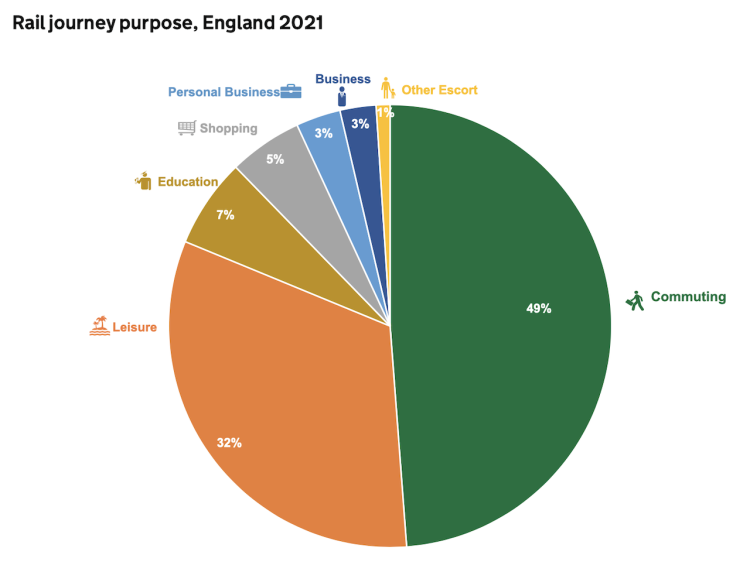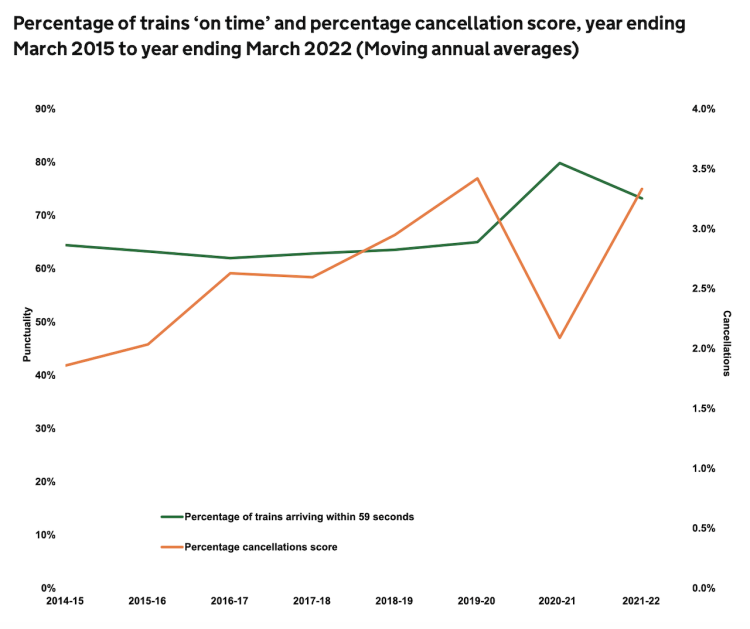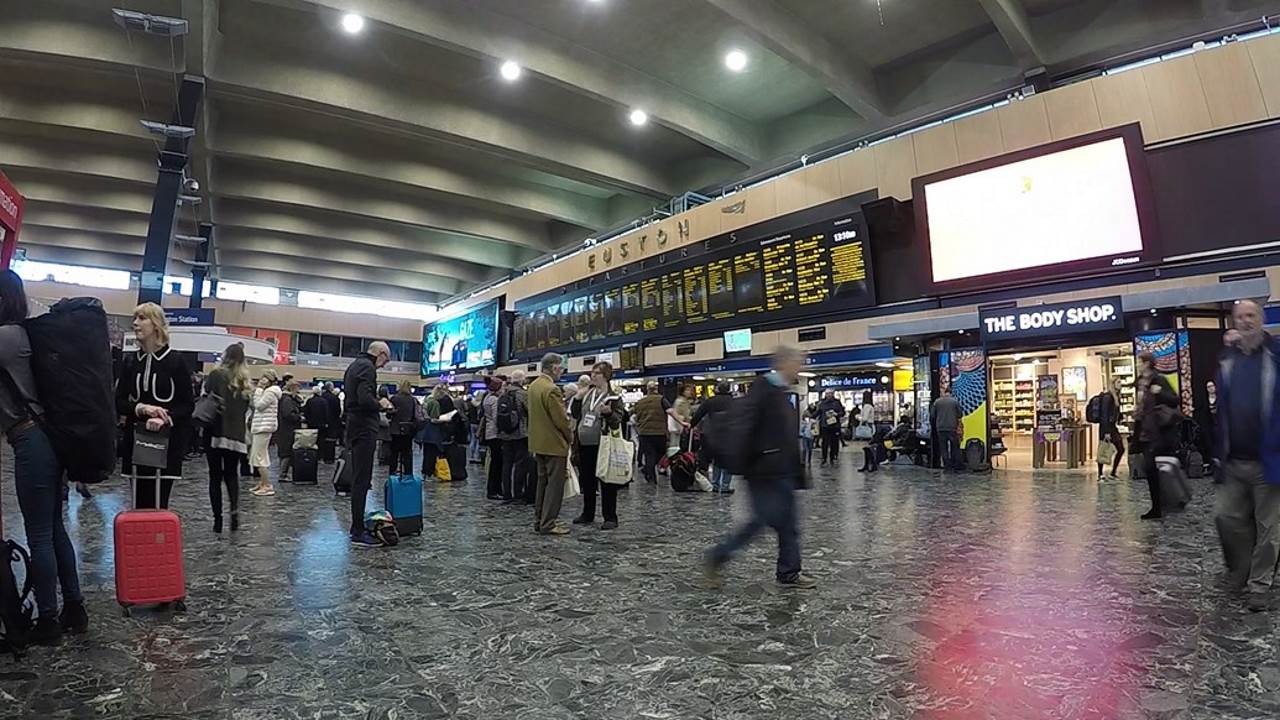The Department for Transport has released its Rail Factsheet covering key statistics for surface rail up to March 2022. The factsheet provides an overview of the year and also offers a comparison with the years ending March 2021 and March 2022. This article offers a brief look at some areas included on the factsheet, to read the factsheet in full please visit: https://www.gov.uk/government/statistics/rail-factsheet-2022/rail-factsheet-2022
Recovery from the pandemic:
Public transport has been hugely impacted by the Covid-19 pandemic with rail journeys hitting an all-time low in April and May 2020, achieving 96% less than in 2019. Despite the massive drop in rail use, figures through 2021 and 2022 have shown a steady return of passengers with March 2022 showing that rail journeys had reached 73% when compared to pre-Covid-19 figures.

Facts regarding Great Britain’s railway up to March 2022:
- 2,570 stations
- 9,864 miles of route of which 3,574 miles are electrified
- 24 Train Operating Companies
- The railways employ approximately 62,000 full-time employees
Comparing rail travel to other modes of transport:
During 2021 the car was by far the most popular mode of transport with rail only accounting for just over 1% of all journeys in England. These figures showed an increase from 2020 and were substantially lower than in 2019 due to the pandemic.
Rail usage and users:
Prior to the pandemic, long-term rail demand was growing and 20 years previous to Covid-19 had seen figures almost double with an all-time high of 1.8 billion journeys recorded in March 2019 with a huge growth of 155.2% when compared to 2018. Sadly the pandemic took its toll on this impressive growth and as of March 2022 were still hitting below the peak at 990 million journeys.
The most used stations in Great Britain in March 2022 were:
- London Waterloo station with 41,426,042 entries and exits
- London Victoria station with 36,776,338 entries and exits
- London Bridge station with 33,309,348 entries and exits
- London Liverpool Street with 32,165,310 entries and exits
- Stratford station in London with 28,182,238 entries and exits
- London Paddington station with 23,870,510 entries and exits
- London Euston station with 23,097,606 entries and exits
- Birmingham New Street station with 22,682,526 entries and exits
- London Kings Cross station with 20,476,492 entries and exits
- Manchester Piccadilly station with 19,581,442 entries and exits
Demand for rail travel grew across all major cities as measures to curb the transmission of Covid-19 were relaxed. 2021 Also saw peak AM and PM travel times return to their pre-covid patterns, this was due to people avoiding travelling at peak time whilst measures were in place.
Throughout 2021 in England, commuting was given as the most popular reason for travelling by rail with 49% of journeys attributed to this and was followed by 32% of rail journeys made for leisure.

Rail Performance:
Up to the year-end of March 2022, punctuality had seen a drop and an increase was noted in cancellations with 3.3% of trains classed as cancellations throughout Great Britain.

Passenger complaints had also seen an increase across Great Britain up to March 2022 in the following areas:
- Punctuality and reliability saw 18.5% of all complaints, an increase from the 2020 to 2021 period
- Space for all passengers to sit or stand saw 8.7% of all complaints, an increase from the 2020 to 2021 period
- Ticketing and refund policies saw 7.3% of all complaints which was less than the 2020 to 2021 period.
- Facilities on board saw 7.2% of all complaints, an increase from the 2020 to 2021 period
- Personal security on board saw 4.7% of all complaints, an increase from the 2020 to 2021 period
Up to the year ending of March 2022, 282,537 complaints were finalised by rail operators which were a huge 112.4% higher than the previous period.
Freight:
Up to the end of March 2022 saw an increase in rail freight movements to a massive 10.48 billion net tonne miles, a growth of 11.3% compared to the previous period. This figure still sits substantially lower than its all-time peak recorded in 2014 which saw 14.11 billion net tonne miles achieved.
To read the factsheet in full please visit: https://www.gov.uk/government/statistics/rail-factsheet-2022/rail-factsheet-2022






Responses